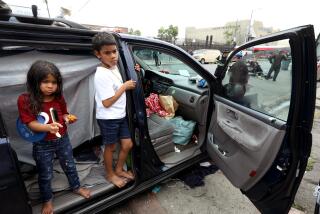Official Wants to Use Schools to Meet Recreation Needs
Santa Ana has far fewer community centers than it needs, says Cleve Williams, executive director of Santa Ana’s Parks, Recreation and Community Services Agency.
The city has gotten a boost from the opening a year ago of the Albert D. Salgado Community Center on the west side and would like eventually to build another major facility in Delhi Park on the east side. Still, the need for facilities is much greater than the funding available to build them.
To bridge that gap, Williams would like to see the city expand its use of an existing resource: its public schools.
“School ends at 3 o’clock. If we can keep those public facilities open until 10 and use them, the schools begin to function like community centers,” says Williams, whose agency would staff the after-school programs.
Santa Ana Parks, Recreation and Community Services, in cooperation with the school district, offers after-school recreation at about 20 elementary schools, Williams says, “but this concept expands that. The programs would be more diversified.”
School computer labs, for example, could provide youngsters with an after-school opportunity “to practice what they learned during school hours as well as involve their parents and family,” Williams says.
Other programs could include art and music, parenting and conflict resolution. “There is a whole range of alternative services and programs and strategies for youths at risk,” he says. “If you have a classroom, you can do that.”
Williams says the city is working on a joint-use policy agreement with the Santa Ana Unified School District. A final recommendation to the school board and City Council is expected to be made in March.
A budget for the program has not been established, he says, but his agency and Nadine Rodriguez, the principal of Roosevelt Elementary School, have hired a part-time person to determine--through surveys and community meetings--types of activities parents would like their children involved in.
They also plan to form a parent community advisory board, Williams says, and coordinate local nonprofit groups and other organizations that use the schools after hours “so it’s not just us but a partnership with all the other organizations in the community.”
More to Read
Sign up for Essential California
The most important California stories and recommendations in your inbox every morning.
You may occasionally receive promotional content from the Los Angeles Times.









